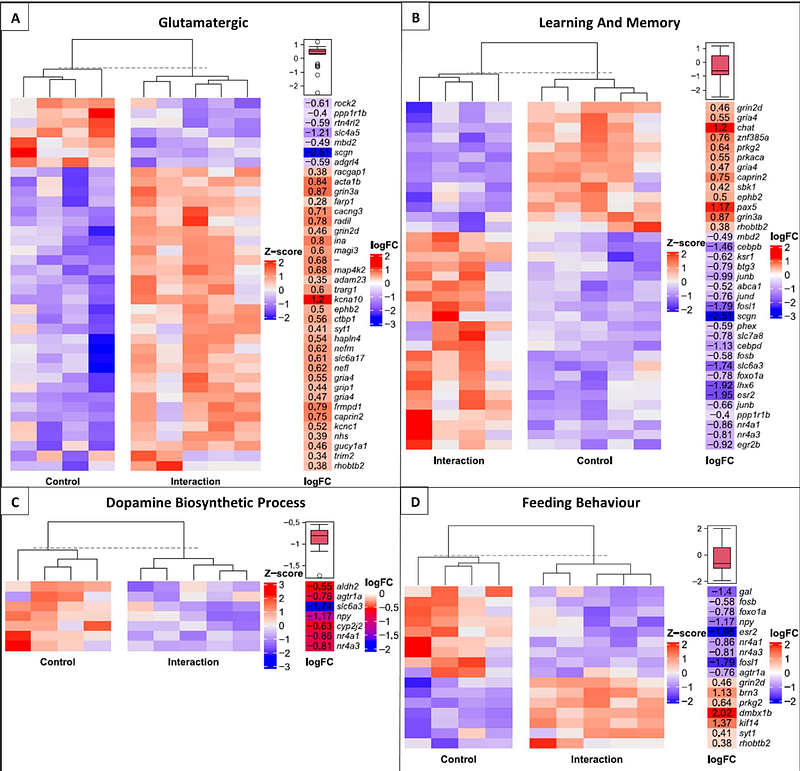Neural Mechanisms of Mutualistic Fish Cleaning Behaviour: a Study in the Wild

Neural Mechanisms of Mutualistic Fish Cleaning Behaviour: a Study in the Wild
Romeo, D.; Ramirez-Calero, S.; Ravasi, T.; Rodolfo-Metalpa, R.; Schunter, C.
AbstractOne crucial interaction for the health of fish communities in coral reefs is performed by the cleaner fish by removing ectoparasites and other particles from the body of other fish, so called clients. Studying the underlying mechanisms of this behaviour is essential to understanding how species react to social stimuli and defining the drivers of mutualism. Here, we pinpoint the neural molecular mechanisms in the cleaning behaviour of Labroides dimidiatus in the wild through an in-situ interaction experiment at a coral reef in New Caledonia. Five cleaners and clients (Abudefduf saxatilis) were placed into underwater aquaria to interact, while five were not presented with a client. The brain transcriptomes revealed 291 differentially expressed genes in cleaners that were interacting with a client. Among these genes, grin2d, npy, slc6a3 and immediate early genes (fosb; fosl1; nr4a1) were related to learning and memory, glutamate and dopamine pathways, which confirm molecular pathways observed in laboratory studies. However, a new potential mechanism was found with npy (Neuropeptide Y) as a driver of feeding behaviour. These results show that in-situ experiments are essential for corroborating interpretations inferred from experiments in captivity and identify drivers of interspecific interactions.


